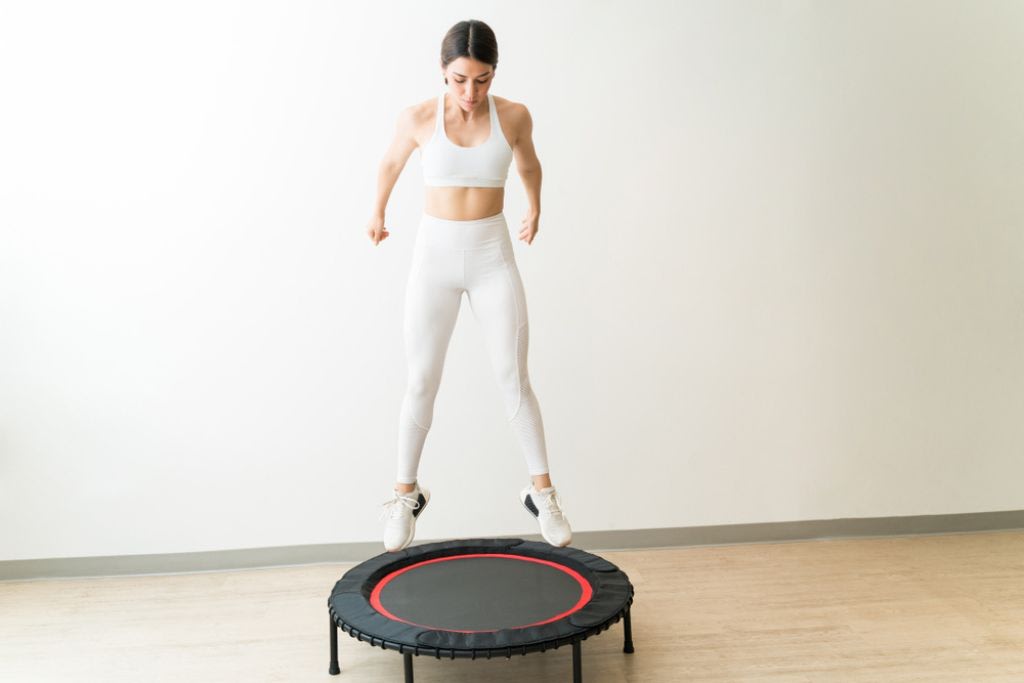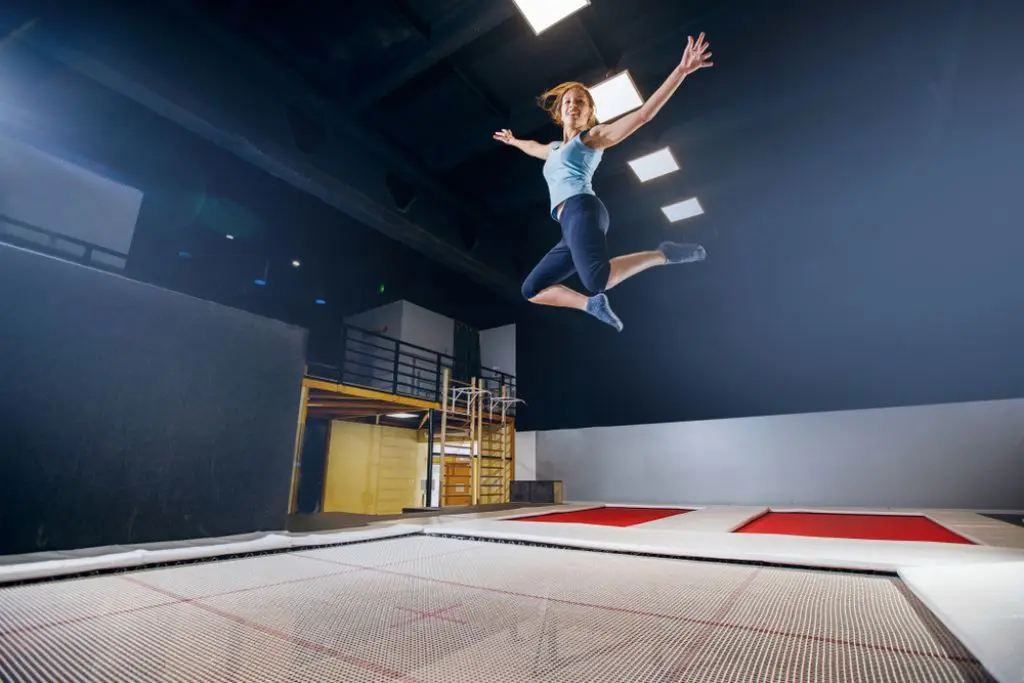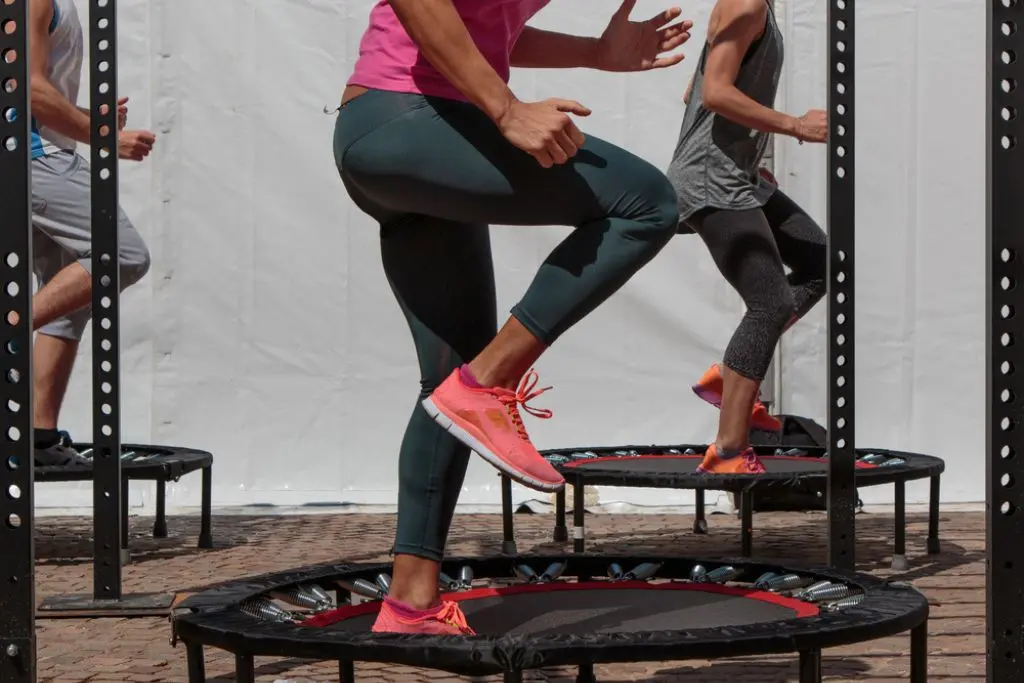Is A Trampoline Good Exercise?

January 5, 2023

When was the last time exercise felt like pure, unadulterated fun? When you weren’t thinking about how many reps or minutes you had to go and simply were in the moment, enjoying moving your body.
Perhaps HIIT is your happy place, you get a thrill out of lifting weights, a sense of peace in each yoga flow, or a feeling of satisfaction when you hit your daily step goal. But there’s one type of exercise that brings back an abundance of joyful childhood memories for many of us and has so many more benefits than we ever knew about as kids - trampolining!
Whether you’re an adult trying to find new ways to move and beat workout boredom, you’re looking for an amazing gift idea to get your kids off the couch or had a trampoline dropped off by Santa Claus on December 25th, trampolining could be a winner. But besides the fun, feel-good factor and how easy it is to get started, what other benefits of jumping on a trampoline are there?
It’s a full-body workout
Trampolining works your entire body with every jump according to Cleveland Clinic, from your legs and glutes to your core, back, and upper body. Regular jumping is a great way to engage your muscles and improve your body composition, or you can mix it up with different jumps to focus on strengthening individual areas of your body.

Take your fitness to new heights
Believe it or not, research by the American Council on Exercise explains that NASA found trampoline training to be as effective a form of aerobic training as running! It’s a fantastic way to get your heart rate up and boost your circulation.
The purpose of their research was to determine if performing mini-trampoline exercise routines met the guidelines for improving cardio fitness, and they did - as long as you commit to it over a long period of time as with any form of regular exercise.
The participants followed a 19-minute routine designed to create a full-body trampolining workout, with research finding the level of energy expenditure when exercising on the mini-trampoline was equivalent to running six miles per hour on flat ground, cycling at a pace of 14 miles per hour, or playing a game of football or basketball.
Another article from the Journal of Applied Physiology compared walking and running on a treadmill at four different speeds to jumping on a trampoline at four heights. The results show that for similar levels of heart rate and VO2, the level of the stimuli on the body is greater with jumping on a trampoline than with running.
Boost your balance, agility and coordination
That same research from ACE found trampolines were used during World War II to help increase the spatial awareness and balance of fighter pilots. How many times during your average week are you required to move and react to an unstable surface? Our guess would be not many!
Another study from 2011 investigated the effects on stability and balance of elderly participants during sudden falls after a 14-week mini-trampoline exercise program, finding increased muscle strength in their feet, legs and ankles, as well as improved ability to regain balance during forward falls.

Improve bone health
Jumping might sound like a high-impact activity for your bones and joints, but because most of the impact is absorbed by the trampoline, this form of exercise is great for the health and strength of your skeletal system.
Results from 2016 research published in the Journal of Sport and Health Science found trampolinists had greater bone density, area, and estimated bone strength than controls. Obviously, most of us aren’t competitive trampolinists — but these findings suggest regular trampolining can help strengthen your bones and lessen your risk of osteoporosis.
Other research from 2019 concluded that their 12-week mini-trampoline exercise program performed by older women with osteopenia (low bone density) was highly effective in improving balance, functional mobility, strength, gait performance and fear of falling.
Stronger immunity and health
According to Wellbeing Journal, the rebounding motion of bouncing on a trampoline can be beneficial for your lymphatic system. This is a network of tissues and organs that is part of your immune system, keeping body fluid levels in balance, detoxifying and defending against infections. Unlike organs like your heart, which pump on their own, your lymphatic system requires movement to pump, and trampolining can be a great option!
It doesn’t feel like exercise
If your workouts are starting to feel like a chore or that feel-good endorphin rush is nowhere to be seen, it’s about time you gave your routine a shakeup. Simple ways to inject new life into your workouts include trying a new training style, exercising at a different time or location, finding a workout buddy, or compiling a new playlist.
Another option? Get bouncing. Research from the American Council on Exercise points out that trampoline workouts, although very effective, often don’t feel as intense as they really are due to the reduced impact and increased fun factor. Get ready for a big endorphin rush and a whole lot of laughs.
Have we convinced you yet that trampolining isn’t just for kids?
If you’re keen to give it a go, you can either invest in a full-size outdoor trampoline, a small indoor rebounder or visit a trampoline park. Large trampolines should have a safety net and rebounders should be positioned away from any furniture or objects. You can also buy specialised trampoline socks with grips for extra stability.
Begin with the basics like jumping on the spot or jumping jacks as you build your confidence, and soon you’ll be away laughing - literally.

A more empowered you starts with Sweat, and our editorial team is here to bring you the latest fitness tips, trainer recommendations, wellbeing news, nutritional advice, nourishing recipes and free workouts.
* Disclaimer: This blog post is not intended to replace the advice of a medical professional. The above information should not be used to diagnose, treat, or prevent any disease or medical condition. Please consult your doctor before making any changes to your diet, sleep methods, daily activity, or fitness routine. Sweat assumes no responsibility for any personal injury or damage sustained by any recommendations, opinions, or advice given in this article.
Fitness